Python Context Free Grammar
In the field of computer science and linguistics, a context-free grammar (CFG) is a formal grammar that describes the syntax of a formal language. It consists of a set of production rules that define how to generate valid strings in the language. Unlike regular grammars, context-free grammars allow non-terminal symbols to be replaced by a sequence of symbols without consideration of the surrounding context.
Context-Free Grammar vs Regular Grammar
The main difference between a context-free grammar and a regular grammar lies in the rules that govern the replacement of non-terminal symbols. In regular grammars, the replacement of non-terminals is restricted to depend on the previous and next symbols in the string. On the other hand, context-free grammars allow non-terminals to be replaced regardless of their position within the string.
Components of a Context-Free Grammar
A context-free grammar is composed of the following components:
1. Terminal symbols: These are the basic units from which strings are constructed. They are the alphabet of the language.
2. Non-terminal symbols: These are abstract symbols that can be replaced by a sequence of symbols. They represent syntactic categories in the language.
3. Production rules: These rules specify how to replace non-terminal symbols with other symbols. They are in the form of non-terminal symbol → sequence of symbols.
4. Start symbol: This is the initial non-terminal symbol from which the generation or recognition of strings begins.
Recognizing and Generating Strings using CFG
Context-free grammars can be used both for recognizing and generating strings in a formal language. Recognition involves determining whether a given string belongs to the language generated by the grammar. This is done using parsing techniques such as top-down (LL) or bottom-up (LR) parsing.
On the other hand, generation involves starting from a given start symbol and repeatedly applying the production rules to generate valid strings in the language. This process can continue indefinitely, generating an infinite number of strings.
Ambiguity in Context-Free Grammar
Ambiguity occurs in context-free grammars when a single string can have multiple parse trees or interpretations. This can happen when the production rules are not specific enough to determine a unique parse tree for a given string. Ambiguity can lead to confusion and difficulties in parsing and understanding the language.
Parsing Techniques in Context-Free Grammar
Parsing techniques are used to analyze the structure of a string according to the rules of a context-free grammar. Two common parsing techniques are Top-Down Parsing and Bottom-Up Parsing.
Top-Down Parsing starts from the start symbol and tries to derive the input string by applying production rules in a leftmost derivation. It uses techniques like LL(k) and recursive descent parsing.
Bottom-Up Parsing, on the other hand, starts with the input string and tries to construct a parse tree in a bottom-up manner. It uses techniques like LR(0), SLR(1), LALR(1), and LR(1) parsing.
Applications of Context-Free Grammar
Context-free grammars have various applications in computer science and linguistics. Some notable applications include:
1. Programming language compilers and interpreters: Context-free grammars are used to define the syntax of programming languages, enabling compilers and interpreters to parse and understand the source code.
2. Natural language processing: Context-free grammars are employed to model the syntax of natural languages, aiding in tasks such as parsing, machine translation, and information extraction.
3. Syntax highlighting in text editors: Context-free grammars are used to define rules for syntax highlighting in text editors, providing visual cues to programmers about the structure of their code.
4. Grammar checking and correction: Context-free grammars can be utilized to detect and correct grammar errors in written text, helping improve the quality of written communication.
FAQs
1. Can Python handle context-free grammars?
Yes, Python has libraries such as NLTK (Natural Language Toolkit) that provide tools for working with context-free grammars. NLTK allows you to define and manipulate context-free grammars in Python.
2. What is the name of Python’s grammar?
Python’s grammar is known as the “Python Grammar”. It defines the syntax of the Python programming language, including rules for statements, expressions, and other language constructs.
3. How can I design a context-free grammar for a specific language?
To design a context-free grammar for a specific language, you need to define the terminal and non-terminal symbols, along with the production rules that govern the generation or recognition of strings in the language. You can use existing grammars as references or consult textbooks and resources on formal language theory.
4. Are all programming languages context-free?
No, not all programming languages are context-free. While many programming languages have context-free grammars, there are also programming languages that require more powerful grammars to capture their syntax. For example, C++, Java, and Python are context-free languages, while languages like Perl and Ruby require more complex formalisms.
5. Is Python’s grammar context-free?
Yes, Python’s grammar is context-free. It can be described using a context-free grammar that consists of a set of production rules defining the syntax of the Python language.
In conclusion, understanding context-free grammars is essential for working with formal languages and syntax analysis. Python provides libraries and tools that make it easy to work with context-free grammars, allowing for tasks such as parsing, generation, and manipulation of strings in formal languages.
Coding Challenge #43: Context-Free Grammar
Is Python Grammar Context-Free?
Python is a widely used programming language known for its simplicity, readability, and versatility. It is acclaimed for its use in various domains, including web development, data analysis, artificial intelligence, and more. Understanding the grammar of a programming language is crucial for writing correct and logical code. In this article, we’ll explore the question of whether Python grammar is context-free, delving into the key components of Python syntax and discussing the concept of context-free grammar.
Understanding Context-Free Grammar
To understand whether Python grammar is context-free, we first need to grasp the concept of context-free grammar (CFG). CFG is a formal grammar that describes the syntax of a programming language. It consists of a set of production rules that define how valid programming constructs can be combined.
In CFG, each production rule consists of a non-terminal symbol on the left-hand side and a sequence of terminal and non-terminal symbols on the right-hand side. The non-terminal symbols are placeholders for language constructs, while the terminal symbols represent actual variables, operators, and other characters.
Python Syntax Elements
Python has a clear and consistent syntax that contributes to its readability. The language utilizes indentation to define code blocks, favors the use of English keywords, and maintains a minimalistic approach. The key syntax elements of Python include:
1. Statements: Python code is organized into statements, where each statement represents an action or a command. Statements can span multiple lines, and indentation is crucial in Python to define code blocks. Leading whitespace determines the indentation level.
2. Variables and Data Types: Python is dynamically typed, allowing variables to be declared without specifying their data type. The language supports various data types, including integers, floating-point numbers, strings, lists, dictionaries, and more.
3. Expressions and Operators: Python supports various operators, including arithmetic, assignment, comparison, logical, bitwise, and membership operators. Expressions consist of operands and operators that can be combined to perform computations.
4. Control Flow: Python provides constructs like conditional statements (if-else), loops (for and while), and exception handling mechanisms, which allow developers to control the flow of their programs. Indentation plays a crucial role in distinguishing code blocks.
Python Grammar
Python’s grammar plays a pivotal role in interpreting and parsing Python source code. The Python Language Reference defines the context-free grammar for the language, which is a set of rules to define the structure of a Python program.
Python’s grammar includes rules for expressions, statements, function definitions, class definitions, and more. It specifies how different language constructs can be formed and combined. While Python’s grammar does provide a clear definition of the language’s syntax, not all parts conform solely to the domain of context-free grammar.
Non-Context-Free Aspects of Python Grammar
While Python’s grammar is primarily context-free, there are certain aspects that introduce context sensitivity. One of the key aspects is the indentation-based block structure. Indentation in Python directly affects the interpretation of code blocks, making it dependent on both the grammar and lexical analysis.
Indentation sensitivity gives rise to context sensitivity because the determination of the beginning and end of an indented block depends on the previous line’s indentation level. Unlike traditional context-free languages, white space is not disregarded or considered as a token in Python.
There are also some peculiarities in Python grammar, such as the treatment of string literals, invocation of functions or methods, and the syntax for decorators. These aspects require context-sensitivity to be correctly parsed and understood.
FAQs
Q: Is Python grammar context-free like languages such as C or Java?
A: Although Python’s grammar is primarily context-free, it contains context-sensitive elements due to its indentation-based block structure.
Q: Why did Python adopt a block structure dependent on indentation?
A: Python emphasizes readability and adopts an indentation-based block structure to enforce consistent coding styles and enhance code clarity.
Q: Are all programming languages context-free?
A: No, not all programming languages have context-free grammars. Some languages, like Python, introduce context sensitivity through features like indentation.
Q: How does the context sensitivity in Python grammar affect programming?
A: The context sensitivity in Python grammar affects code interpretation and parsing. It requires developers to pay careful attention to whitespace and indentation, ensuring the correct structuring of code blocks.
Q: Is it possible to modify Python’s grammar?
A: While it is technically possible to modify Python’s grammar by manipulating the compiler, it is neither recommended nor a common practice. Python’s standard grammar is well-established and changing it could lead to compatibility issues.
In conclusion, Python’s grammar is predominantly context-free, defining the language’s syntax through a set of production rules. However, certain aspects, such as the indentation-based block structure, introduce context sensitivity. Understanding Python’s grammar and its context-free and context-sensitive elements is essential for writing correct and efficient Python code.
What Is Context-Free Grammar With Example?
Context-Free Grammar (CFG) is a mathematical formalism used to describe the syntax of languages. It is widely employed in computer science, natural language processing, and linguistics. With CFG, we can define a set of rules and productions that specify how a language’s structure should be formed.
CFG comprises a set of terminal and non-terminal symbols, along with rules for generating valid strings of symbols. Terminal symbols represent the basic units of a language, such as words or characters, while non-terminal symbols are placeholders for groups of symbols. The rules determine the relationships between these symbols and how they can be combined to form valid phrases or sentences.
Let’s delve deeper and explore the elements and concepts of CFG, accompanied by illustrative examples.
Elements of Context-Free Grammar:
1. Terminal Symbols: These symbols are atomic units of the language. They are the building blocks from which valid sentences are constructed. For instance, in English, terminal symbols may be words like “dog,” “cat,” or “ball.”
2. Non-Terminal Symbols: Non-terminal symbols act as placeholders for a group of symbols. They define higher-level structures within the language. Non-terminal symbols are represented using uppercase letters. For example, in an English CFG, non-terminals might be “Sentence,” “Noun,” or “Verb Phrase.”
3. Start Symbol: The start symbol is a special non-terminal symbol that represents the entire language. It depicts the main element from which all valid sentences originate. In English, the start symbol would typically be “Sentence.”
4. Productions: Productions are rules that define how the symbols in a CFG can be combined to form valid structures. They specify the replacement of non-terminal symbols with a sequence of terminal and/or non-terminal symbols.
Example of Context-Free Grammar:
Let’s consider a simple CFG for generating noun phrases in English:
1. Sentence -> NounPhrase VerbPhrase
2. NounPhrase -> Article Noun
3. NounPhrase -> Pronoun
4. VerbPhrase -> Verb
5. VerbPhrase -> Verb NounPhrase
6. Article -> “a”
7. Article -> “an”
8. Article -> “the”
9. Pronoun -> “I”
10. Pronoun -> “you”
11. Noun -> “dog”
12. Noun -> “cat”
13. Verb -> “ran”
In the above example, the ‘Sentence’ is the start symbol. The production rules describe the relations between non-terminals and terminals. For instance, the first production rule (Sentence -> NounPhrase VerbPhrase) indicates that a ‘Sentence’ consists of a ‘NounPhrase’ followed by a ‘VerbPhrase.’
Let’s generate a sentence using the above grammar:
1. Start with ‘Sentence.’
2. Apply the first production rule, ‘Sentence -> NounPhrase VerbPhrase.’
3. Now expand ‘NounPhrase’ and ‘VerbPhrase’ as per their respective rules.
4. For ‘NounPhrase,’ apply rule 3, ‘NounPhrase -> Pronoun,’ and replace ‘NounPhrase’ with ‘Pronoun.’
5. For ‘VerbPhrase,’ apply rule 4, ‘VerbPhrase -> Verb,’ and replace ‘VerbPhrase’ with ‘Verb.’
6. Apply rule 9, ‘Pronoun -> “I”,’ to replace ‘Pronoun’ with ‘I.’
7. Apply rule 13, ‘Verb -> “ran”,’ to replace ‘Verb’ with ‘ran.’
8. The final sentence generated is ‘I ran.’
By following the production rules of the CFG, we can generate a wide variety of sentences conforming to the specified language rules.
FAQs about Context-Free Grammar:
Q1. What is the difference between context-free and context-sensitive grammars?
A1. Context-free grammars have productions that depend solely on the non-terminal symbols on the left side, whereas context-sensitive grammars allow for more complex productions that depend on the context in which a symbol appears.
Q2. Can a single CFG describe all languages?
A2. No, CFG can only describe a subset of languages known as context-free languages. There are languages that require more complex grammars, like context-sensitive or unrestricted grammars.
Q3. Are CFGs only applied in computer science?
A3. While CFGs play a crucial role in computer science, especially in compiler design, they are also extensively used in linguistics and natural language processing to describe the structure of languages.
Q4. Can CFGs describe human languages accurately?
A4. CFGs can provide a basic understanding of the syntax of human languages, but they may not capture the intricacies and complexities of natural languages completely. Natural languages often exhibit phenomena that are beyond the scope of CFG.
In conclusion, Context-Free Grammar is a powerful tool that allows us to define the syntax of a language using production rules. It enables us to generate a wide range of valid sentences conforming to the specified grammar rules. Although CFGs have some limitations, they play a crucial role in several fields, including computer science, linguistics, and natural language processing.
Keywords searched by users: python context free grammar context-free grammar python code, context free grammar python nltk, is python context-free, python grammar name, Design context free grammar for the following languages, python grammar library, python parser, are programming languages context-free
Categories: Top 74 Python Context Free Grammar
See more here: nhanvietluanvan.com
Context-Free Grammar Python Code
Introduction:
Context-free grammar (CFG) is a formal language model used in computer science and linguistics to describe the syntax and structure of programming languages, natural languages, and other formal languages. In this article, we will explore the basics of context-free grammar and how to implement a CFG parser in Python.
What is Context-Free Grammar?
Context-free grammar consists of a set of production rules that define how a language’s symbols can be formed and rearranged. It is called “context-free” because each rule applies regardless of its surrounding context or the symbols it interacts with. A context-free grammar consists of four components:
1. Terminal Symbols: The basic building blocks or atomic elements of the language. These symbols cannot be further broken down.
2. Non-terminal Symbols: Symbols that can be decomposed into sequences of other symbols.
3. Production Rules: Define how symbols can be substituted or rearranged. They consist of a non-terminal symbol on the left-hand side (LHS) and a sequence of symbols, both terminal and non-terminal, on the right-hand side (RHS). For example, A -> XY means that A can be replaced with XY.
4. Start Symbol: The symbol from which the derivation of the language begins.
CFG Example:
Let’s take a simple CFG example to understand the concept better. Consider the following grammar:
1. S -> aSb
2. S -> ε
Here, S is the start symbol and ε represents the empty string. The first production rule means that S can be replaced by the concatenation of “a,” another S, and “b.” The second rule indicates that S can be replaced by an empty string.
Implementing a CFG Parser in Python:
To implement a CFG parser in Python, we need to perform two main tasks: parsing the grammar and parsing the input string.
Parsing the Grammar:
First, we need to parse the grammar itself. We can represent the CFG using a dictionary in Python, where the keys are non-terminal symbols, and the values are lists of possible RHS substitutions. Here’s an example:
grammar = {
‘S’: [‘aSb’, ”]
}
In this example, we define the same grammar we discussed earlier. The ‘S’ key maps to a list of possible RHS substitutions.
Parsing the Input String:
Once we have the grammar, we can build a recursive function to parse the input string based on the CFG rules:
“`python
def parse(grammar, symbol, string):
if string == ”:
if symbol == ”:
return True
return False
for rule in grammar[symbol]:
if rule == ”:
if symbol == ”:
return parse(grammar, symbol, string[1:])
continue
if rule[0] == string[0]:
if parse(grammar, symbol, string[1:]):
return True
return False
“`
Here, `grammar` is the CFG defined as a dictionary, `symbol` is the current non-terminal symbol we are expanding, and `string` is the remaining input string to be parsed. The function checks if the string is empty and if so, returns whether the current symbol is the start symbol. If the string is not empty, it iterates through the possible rule substitutions and recursively calls the `parse` function with the updated string and symbol.
Now, we can test our parser using the given example:
“`python
grammar = {
‘S’: [‘aSb’, ”]
}
input_string = input(“Enter a string: “)
if parse(grammar, ‘S’, input_string):
print(“String is valid!”)
else:
print(“String is invalid!”)
“`
FAQs:
Q: What are terminal and non-terminal symbols?
A: Terminal symbols are the basic building blocks or atomic elements of a language, whereas non-terminal symbols can be further decomposed into sequences of other symbols.
Q: Why is it called context-free grammar?
A: It is called context-free because the production rules apply regardless of the surrounding context or symbols it interacts with.
Q: What is the purpose of a start symbol in CFG?
A: The start symbol indicates the symbol from which the derivation of the language begins.
Q: How can CFG be useful in programming languages?
A: CFG is used to describe the syntax and structure of programming languages. By defining a grammar, we can check the validity of programs and generate meaningful error messages.
Q: Can CFG be used in natural language processing?
A: Yes, CFG is widely used in the analysis and generation of natural languages. It helps in parsing sentences, understanding grammar, and generating sentences with proper structure.
Conclusion:
Context-free grammar is a powerful tool for describing the syntax and structure of languages. By implementing a CFG parser in Python, we can parse and validate input strings based on the defined grammar. This article provided an in-depth guide on context-free grammar in Python and explained how to build a parser. Feel free to explore more complex CFGs and expand the functionalities of the parser for your specific use cases.
Context Free Grammar Python Nltk
Context-Free Grammar (CFG) is a formalism used to describe the structure of natural language sentences. It provides a set of rules for generating strings of words that follow the syntactic rules of a given language. In this article, we will explore how to work with CFG in Python using the Natural Language Toolkit (NLTK) library, and we will cover the topic in depth to ensure a comprehensive understanding.
What is Context-Free Grammar?
Context-Free Grammar is a formal grammar type where each rule consists of a non-terminal symbol on the left-hand side and a sequence of zero or more symbols (both terminals and non-terminals) on the right-hand side. The rules govern the generation of sentences by replacing non-terminals with the corresponding sequences of symbols.
CFGs are widely used in natural language processing tasks like parsing, language generation, and machine translation. They provide a structured representation of the syntax of a language, allowing for the analysis and manipulation of sentences.
Working with CFG in Python using NLTK
Python’s NLTK library provides a rich set of tools and resources for natural language processing. It includes a module specifically designed for working with CFGs.
To work with CFG in NLTK, we need to import the ‘nltk’ library and the ‘CFG’ class. Here’s an example of how to define a simple CFG for generating basic English sentences:
“`python
import nltk
from nltk import CFG
# Define the CFG
grammar = CFG.fromstring(“””
S -> NP VP
NP -> Det N
VP -> V NP
Det -> ‘the’ | ‘a’
N -> ‘dog’ | ‘cat’
V -> ‘chased’ | ‘caught’
“””)
“`
In the above example, we create a CFG with four non-terminal symbols (S, NP, VP, Det) and four terminal symbols (the, a, dog, cat). The arrows denote the production rules.
We can then use the CFG to generate random sentences or parse existing sentences. For example, to generate a random sentence:
“`python
sentence = grammar.generate()
print(‘ ‘.join(sentence))
“`
This will output a random sentence following the rules of the CFG, such as “the dog chased a cat.”
To parse an existing sentence, we can utilize NLTK’s ChartParser or EarleyChartParser class. These parsers use dynamic programming algorithms to efficiently parse a sentence according to the given CFG. Here’s an example of how to parse a sentence:
“`python
from nltk.parse.chart import ChartParser
# Create the parser
parser = ChartParser(grammar)
# Parse a sentence
sentence = “the dog chased a cat”
tokens = sentence.split()
parse_trees = parser.parse(tokens)
# Print the parse tree(s)
for tree in parse_trees:
print(tree)
“`
The code above creates a chart parser using the defined CFG and attempts to parse the sentence “the dog chased a cat”. It splits the sentence into tokens and then uses the parser to generate possible parse trees. Finally, it prints the resulting parse tree(s) to the console.
FAQs
Q1: Can a CFG generate all possible sentences of a language?
A1: No, CFGs have limitations and cannot generate every possible sentence of a language. They provide a static representation of the syntax and do not account for context-sensitivity or semantics.
Q2: How can I modify the grammar to generate more complex sentences?
A2: To generate more complex sentences, you can add more production rules or introduce additional non-terminal symbols. You can also define multiple CFGs and combine them to handle different parts of speech or syntactic structures.
Q3: Can NLTK parse ambiguous sentences?
A3: Yes, NLTK’s parsers can handle ambiguous sentences and generate all possible parse trees. It’s important to note that ambiguity is inherent in natural languages, and the parser provides multiple interpretations when faced with ambiguity.
Q4: Are there any alternative Python libraries for working with CFGs?
A4: Yes, apart from NLTK, there are other libraries like spaCy, Stanford CoreNLP, and AllenNLP that provide CFG parsing capabilities with different features and performance characteristics.
In conclusion, understanding and working with Context-Free Grammar is essential for various natural language processing tasks. Python’s NLTK library provides powerful tools to work with CFGs, allowing for sentence generation and parsing. By leveraging NLTK’s functionality, developers can build robust language models and enhance their NLP applications.
Is Python Context-Free
Python is a popular high-level programming language that offers a range of functionalities and features. When it comes to understanding the language’s syntax and structure, it is essential to explore its context-free nature. In this article, we will delve into the concept of context-free languages and discuss whether Python adheres to this classification.
Understanding Context-Free Languages
Before we determine whether Python is context-free, it is important to grasp the concept of context-free languages. In the field of theoretical computer science, a formal language is considered context-free if its grammar can be fully expressed using a context-free grammar (CFG). CFGs consist of a set of production rules that describe how to generate valid sentences in the language. These rules comprise non-terminal symbols, terminal symbols, and a start symbol.
Context-Free Grammar in Python
Python, just like any other programming language, has a specific syntax and grammar that developers must adhere to in order to write correct and valid programs. Python’s grammar is a context-free grammar, which means it can be defined using a CFG. The official Python documentation provides a detailed specification of the language’s grammar known as the Python Language Reference (PLR).
The PLR defines the syntax of Python using a variation of Backus-Naur Form (BNF), which is a widely used notation for CFGs. This specification allows developers and language implementers to understand the syntax of Python and build tools like parsers and compilers to process Python code.
The Structure of Python Grammar
Python grammar consists of a set of production rules that define how to generate Python code. These rules include symbols, which can be either terminal or non-terminal. Terminal symbols represent actual tokens in Python code, such as keywords, operators, and literals. Non-terminal symbols, on the other hand, represent groups of tokens or other non-terminal symbols.
The start symbol of Python’s grammar is the file input, which represents a complete Python program. From there, the grammar is composed of various rules that define statements, expressions, functions, classes, and other elements of Python code.
Is Python Truly Context-Free?
Python’s grammar being defined by a CFG implies that it is indeed a context-free language. However, it is worth noting that Python has additional features that go beyond a typical CFG. For instance, Python allows indentation to indicate the structure of code blocks, such as loops and conditional statements. This feature, known as significant whitespace, is not part of the grammar specified in the PLR, and its presence distinguishes Python from other context-free languages like C or Java.
While significant whitespace is not accounted for in the formal CFG, it does not mean that Python’s grammar ceases to be context-free. The grammar rules defined in the PLR can still generate valid Python code, but additional considerations are required to handle the indentation-based syntax correctly.
Frequently Asked Questions
Q: Does Python’s significant whitespace violate the context-free nature of the language?
A: No, Python’s significant whitespace does not violate its context-free nature. The grammar defined in the Python Language Reference (PLR) is still context-free, but it requires additional handling of whitespace to correctly interpret the code’s structure.
Q: Are there any other programming languages that have significant whitespace?
A: Python is known for its significant whitespace feature, but it is not the only language that uses it. Other examples include Haskell, CoffeeScript, and YAML.
Q: Can a context-free grammar handle indentation-based syntax?
A: Yes, context-free grammars can handle indentation-based syntax with the help of additional mechanisms to recognize and process whitespace. These mechanisms can be incorporated into the parsing algorithms used to analyze the code.
Q: Are there any drawbacks of Python’s significant whitespace?
A: Python’s significant whitespace feature can sometimes be a point of contention for developers accustomed to languages that rely on delimiters, such as braces or keywords, to indicate code blocks. However, significant whitespace also promotes code readability and consistency.
Q: How does Python enforce indentation rules?
A: Python enforces indentation rules by requiring consistent indentation levels for code blocks. The use of spaces or tabs is generally allowed, as long as they are used consistently throughout the code. Additionally, Python’s interpreter will raise an error if incorrect or inconsistent indentation is detected.
In conclusion, Python is classified as a context-free language due to its grammar being defined using a context-free grammar (CFG). While the presence of significant whitespace introduces additional considerations, it does not undermine the context-free nature of Python. Understanding Python’s context-free structure can aid developers in writing correct and valid programs while leveraging the language’s powerful features.
Images related to the topic python context free grammar

Found 11 images related to python context free grammar theme
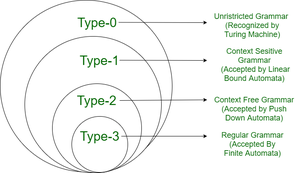

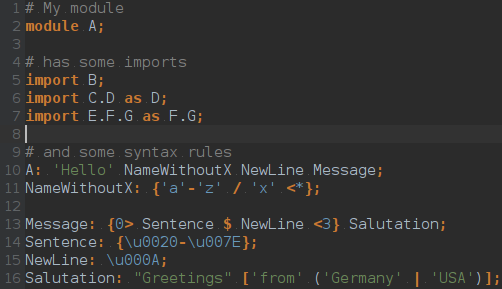
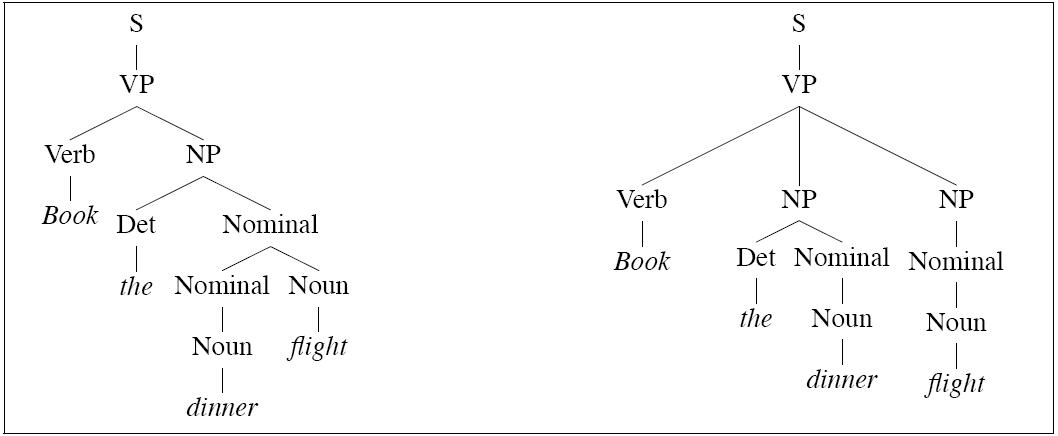
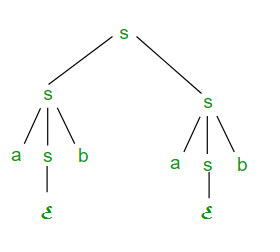









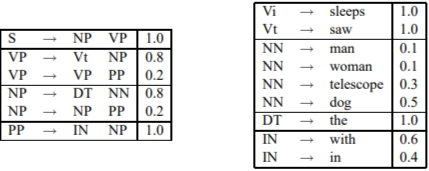















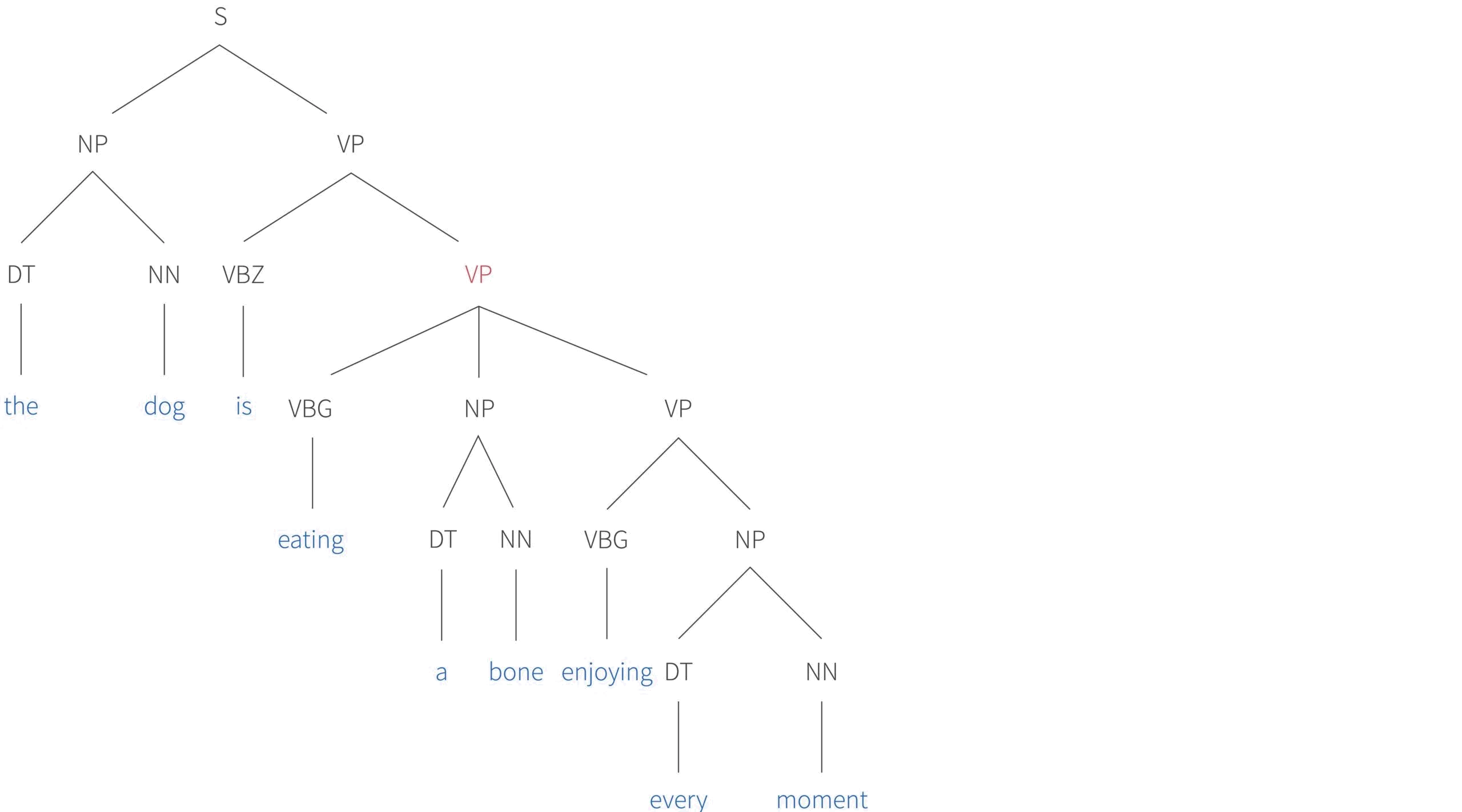


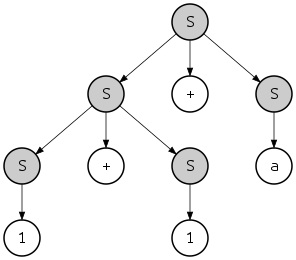
Article link: python context free grammar.
Learn more about the topic python context free grammar.
- Efficient Context-Free Grammar parser, preferably Python …
- 10. Full Grammar specification — Python 3.11.4 documentation
- Is Python a context-free language?
- Context-Free Grammar
- Regular Expression Vs Context Free Grammar – GeeksforGeeks
- How is the Python grammar used internally? – Stack Overflow
- Context-free grammars with NLTK
- Context Free Grammar A Simple Grammar – Python Studio
- Parsing with Context-Free Grammar – O’Reilly
- decontextualize · Recursion and context-free grammars
- Is Python a context-free language?
See more: nhanvietluanvan.com/luat-hoc